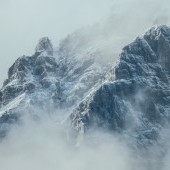Annapurna Region: A Trekking Paradise in Nepal
If you are an adventure enthusiast, Nepal is undoubtedly on your bucket list. And, when it comes to trekking in Nepal, the Annapurna Region is one of the most popular trekking destinations that attract thousands of tourists every year. From its picturesque landscapes to the diverse culture and tradition of the local people, the Annapurna Region offers a perfect blend of adventure and cultural experience. In this blog post, we will delve into the details of the Annapurna Region, its top trekking routes, and everything you need to know before planning your next trekking tour in Nepal.
Annapurna Region: A Brief Introduction
Located in western Nepal, the Annapurna Region is home to some of the highest mountain peaks in the world, including Annapurna I, the tenth-highest peak. The region is spread over 7,629 square kilometers and is divided into two major trekking areas - the Annapurna Circuit Trek and the Annapurna Sanctuary Trek. The former takes around 18-21 days to complete, while the latter can be done in 7-12 days.
Top Trekking Routes in the Annapurna Region
The Annapurna Circuit Trek is one of the most popular trekking routes in the region, which covers the entire Annapurna massif and takes you through diverse landscapes, from subtropical forests to high-altitude deserts. This trek also involves crossing the Thorong La Pass (5,416 m), which is one of the highest mountains passes in the world. Along the way, you'll come across several villages, including Pisang, Manang, and Muktinath, where you can witness the local culture and lifestyle.
Another popular trekking route in the Annapurna Region is the Annapurna Sanctuary Trek, which takes you to the base of Annapurna I, the most iconic peak in the region. The trek starts from Nayapul and takes you through picturesque villages like Ghandruk, Chomrong, and Deurali. The trail is known for its stunning views of the Annapurna range, including Annapurna South, Annapurna III, and Gangapurna.
Trekking Permits and Regulations in the Annapurna Region
Trekking in the Annapurna Region requires obtaining the necessary permits and adhering to the regulations set by the government. The Annapurna Conservation Area Permit (ACAP) and the Trekkers' Information Management System (TIMS) card are mandatory for all trekkers. The ACAP costs USD 30 per person, while the TIMS card costs USD 20. These permits are available at the Nepal Tourism Board office in Kathmandu or Pokhara, as well as at various check-posts along the trekking routes.
Best Time to Trek in the Annapurna Region
The best time to trek in the Annapurna Region is from September to November and from March to May when the weather is dry and stable. The monsoon season from June to August can make the trails slippery and dangerous, while the winter months from December to February can bring heavy snowfall, making the trekking routes inaccessible.
Tips for Trekking in the Annapurna Region
Trekking in the Annapurna Region requires physical fitness and mental stamina, as the trails involve steep climbs and descents. It's important to carry the necessary trekking gear, including sturdy hiking boots, warm clothes, and a good-quality backpack. It's also advisable to carry a water purifier or chlorine tablets, as the water sources along the trail may not be safe for drinking. Hiring a licensed guide or porter can also make the trekking experience more comfortable and enjoyable, as they can provide valuable information about the local culture and geography.
In conclusion, the Annapurna Region is a trekking paradise in Nepal that offers a unique blend of adventure and cultural experience. With its stunning landscapes, diverse culture, and iconic peaks, the region is a must-visit destination for adventure enthusiasts from around the world. Whether you opt for the Annapurna Circuit Trek or the Annapurna Sanctuary Trek, make sure to obtain the necessary permits, carry the right gear, and hire a licensed guide or porter for a safe and memorable trekking experience.

.jpg)




